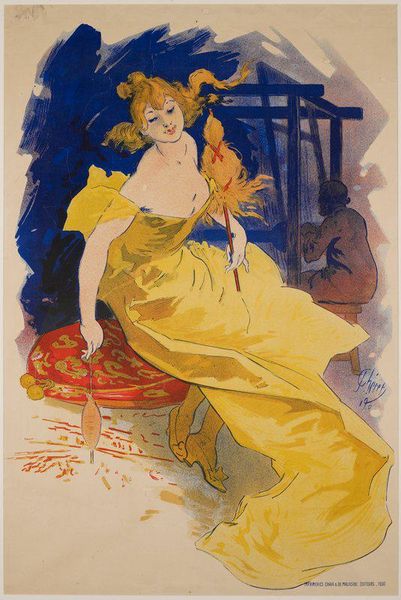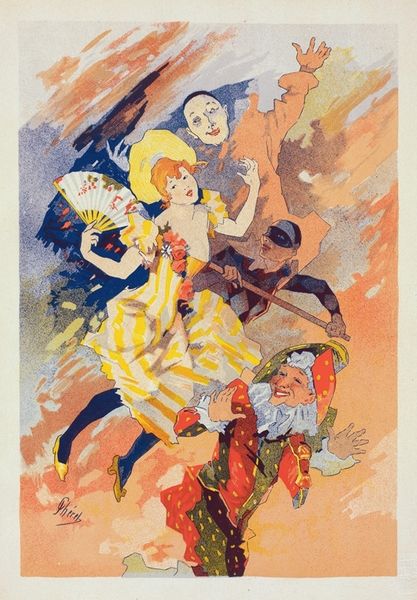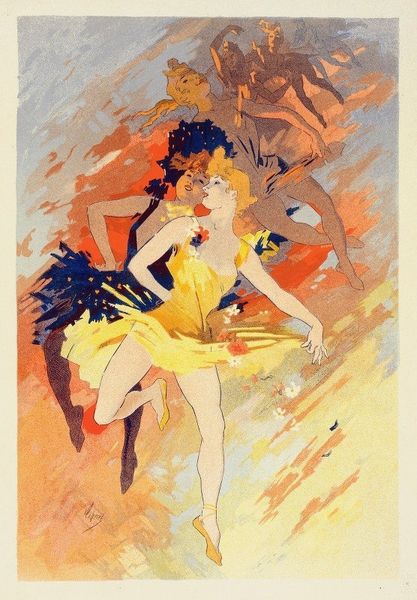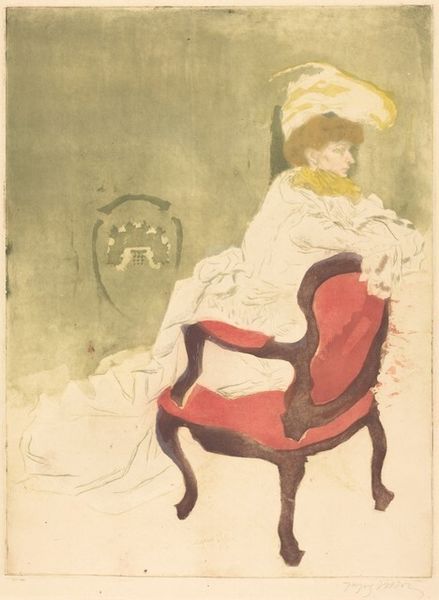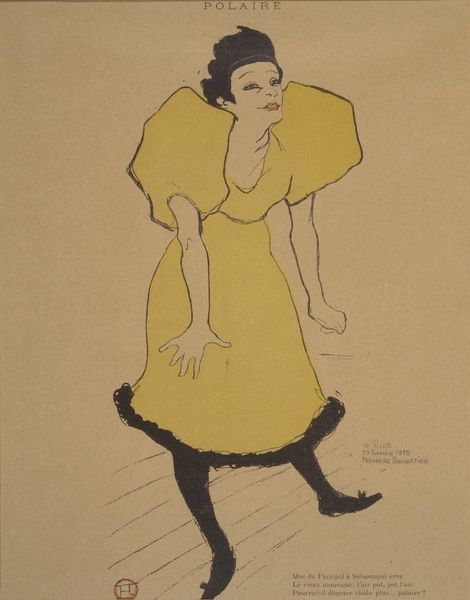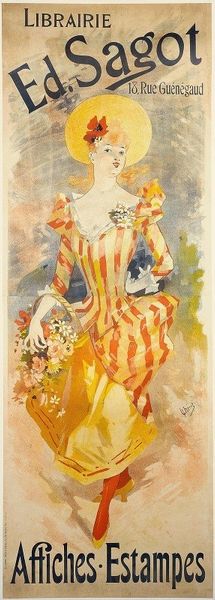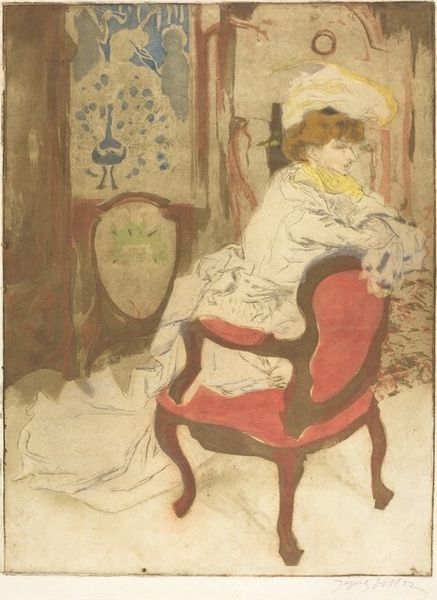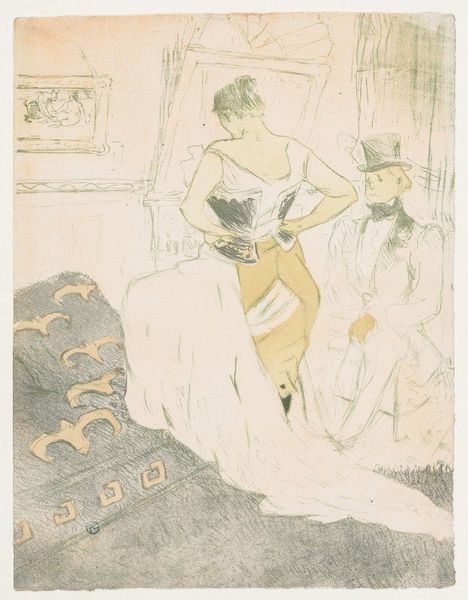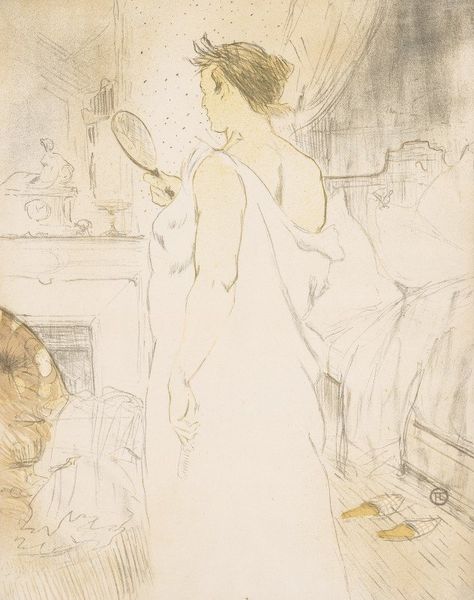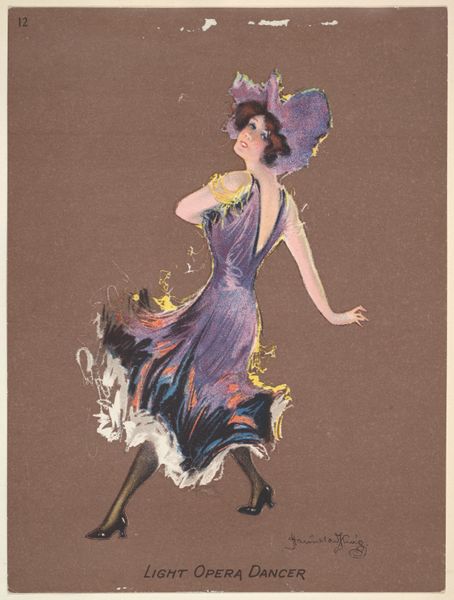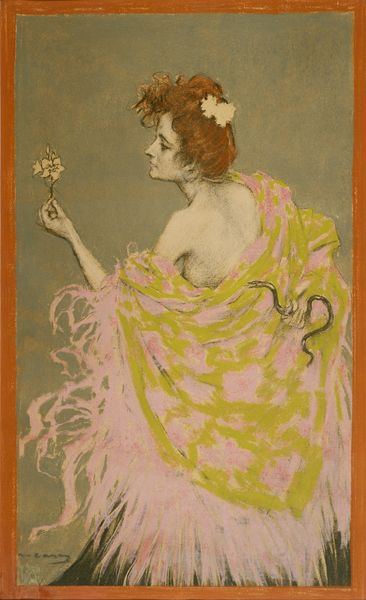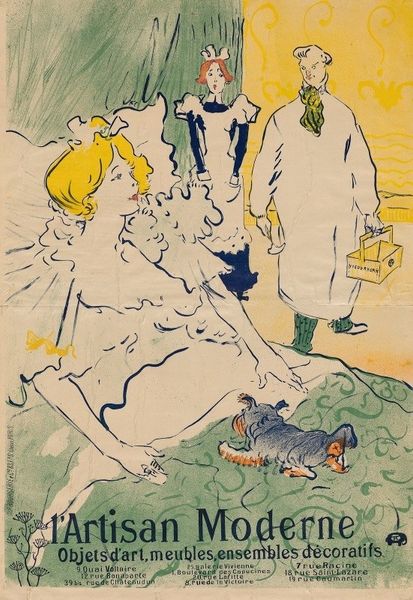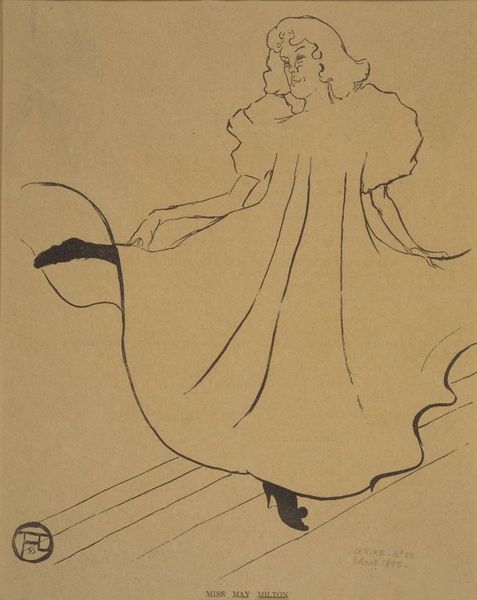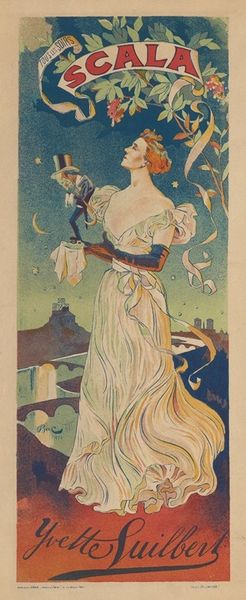
lithograph, color-lithograph, print, poster
#
portrait
#
art-nouveau
#
lithograph
#
color-lithograph
# print
#
figuration
#
naive art
#
genre-painting
#
poster
Dimensions: 47 x 31 1/2 in. (119.38 x 80.01 cm) (image)
Copyright: No Copyright - United States
Editor: Take a peek at "La Fileuse," a color lithograph created around 1900 by Jules Chéret, residing at the Minneapolis Institute of Art. I’m struck by the energetic movement and vibrant yellows. The woman looks as if she is dancing instead of spinning. How do you read this image? Curator: It's a poster, isn't it? Think about the context: late 19th-century Paris. Chéret was revolutionizing street advertising. He was giving us, the urban public, a world of attractive, seemingly independent women. Consider who "La Fileuse" is advertising to. Editor: Right, a woman spinning… promoting thread? It seems too straightforward. Curator: Exactly! It's not just about selling a product. It's selling an *image*. The ‘Chérette,’ as these figures were known, became the face of modernity and consumer culture. But, look closer. Note how her gaze avoids meeting ours. Is that a subversion of the idealized modern woman? Editor: That’s interesting. So, she represents female empowerment, but maybe also some hesitancy or detachment? And, what about the black figure in the background, seemingly operating the loom? How should that person be perceived? Curator: The representation complicates the visual dynamics. It subtly reminds the viewer of the socio-economic realities underpinning even the most whimsical image. Did it influence or simply reflect contemporaneous perceptions? Consider what public discourses shape her portrayal versus celebrate the women's emancipation. Editor: I’m beginning to see this not as just a pretty image, but as a window into complex societal power dynamics at the time. It gives me a new perspective on advertising itself. Curator: Exactly. Chéret’s work raises fundamental questions about the role of art in shaping our understanding of history and culture.
Comments
No comments
Be the first to comment and join the conversation on the ultimate creative platform.
